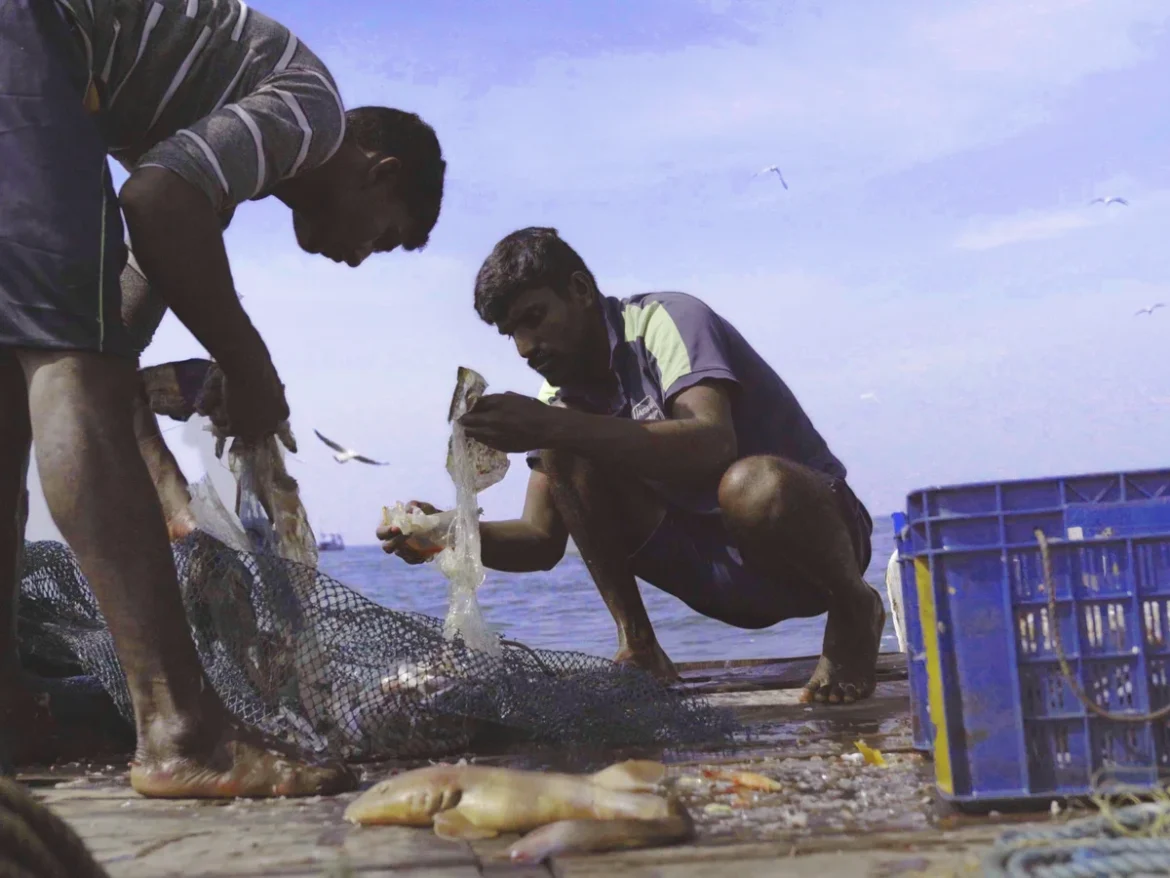Braving The Ocean:
“Fear not, fear not… a Koli fears nothing,” sings a deep male voice in the background; the ditty refers to rising tides and howling winds that a Koli (fisherman) faces as he goes out to sea, but the big monster to fear now is climate change.
Sarvnik Kaur’s Against The Tide follows two young Kolis friends, with divergent views on how to overcome declining hauls of fish and ruthless methods used by commercial fishing operators from China and the Gulf. The film has struck such a chord with viewers and film festival juries all over the world, that its list of prizes just keeps growing.
Ganesh Nakhawa belongs to a relatively prosperous family, he studied in Scotland, lives in a large apartment with his wife, has a fleet of modern fishing boats and drives a car with his Instagram handle ‘Last fisherman of Bombay’ painted on the side. Rakesh Koli lives in a toilet-less shanty with his wife, mother and ailing infant. His family believes in traditional methods of fishing, in small boats in shallow waters. He is strongly against deep sea fishing, even if the nets bring in more garbage and dead fish than catch that can be sold for good prices. His new-born has a heart problem that eats up the family’s meagre finances, and at some point, Rakesh has to sell his boat.
Ganesh has severe money troubles because he has mortgaged his wife’s jewellery, taken huge loans to modernize his boats, and also used the legally forbidden LED method (using strong lights underwater to attract more fish) to get a large haul, but when the oceans have been depleted, there is cause for worry.
Despite their divergent points of view and lifestyles, Ganesh and Rakesh meet often, even if it is to disagree; Ganesh is there for his buddy when the child has to be taken to hospital; Rakesh and his family turn up for the birthday party of Ganesh’s grandfather. In a documentary, where it is difficult to script scenes or predict which way an interaction will go, Sarvnik Kaur manages to build up emotional conflict and drama between the two men and also takes in the larger picture of a polluted, endangered ecosystem that threatens to destroy the livelihood of the fisherfolk. Soon it might become untenable for Kolis to survive in their ancestral profession, and as the young generation decides to look for other jobs, that would be the end of a rich culture of stories, rituals, songs, dances, language and community bonds. Rakesh’s mother, who opens the film giving the screaming child a massage, believes in the benevolence of the “ocean goddess” and the traditional methods of fishing; but when Rakesh’s boat is sold and she is reduced to helpless tears, she still blesses the buyer.
Shot beautifully by Ashok Meena, there are stunning images of the sunrises and sunsets, the shimmering sea and underwater shots of marine life, fascinating sequences of the net-casting and fishing operation, but Kaur has also chosen her protagonists well—they have expressive faces and well-articulated opinions. There is an air of doom but also hope as they navigate their boats, in the search of that one massive catch that will rescue them from sinking. Ganesh and Rakesh are two tiny specks in the vast expanse of the sea, and saving the environment is beyond them. All they can do is tell their story, and luckily get a filmmaker like Sarvnik Kaur to take it to the world.
(This piece first appeared in thewire.in)

